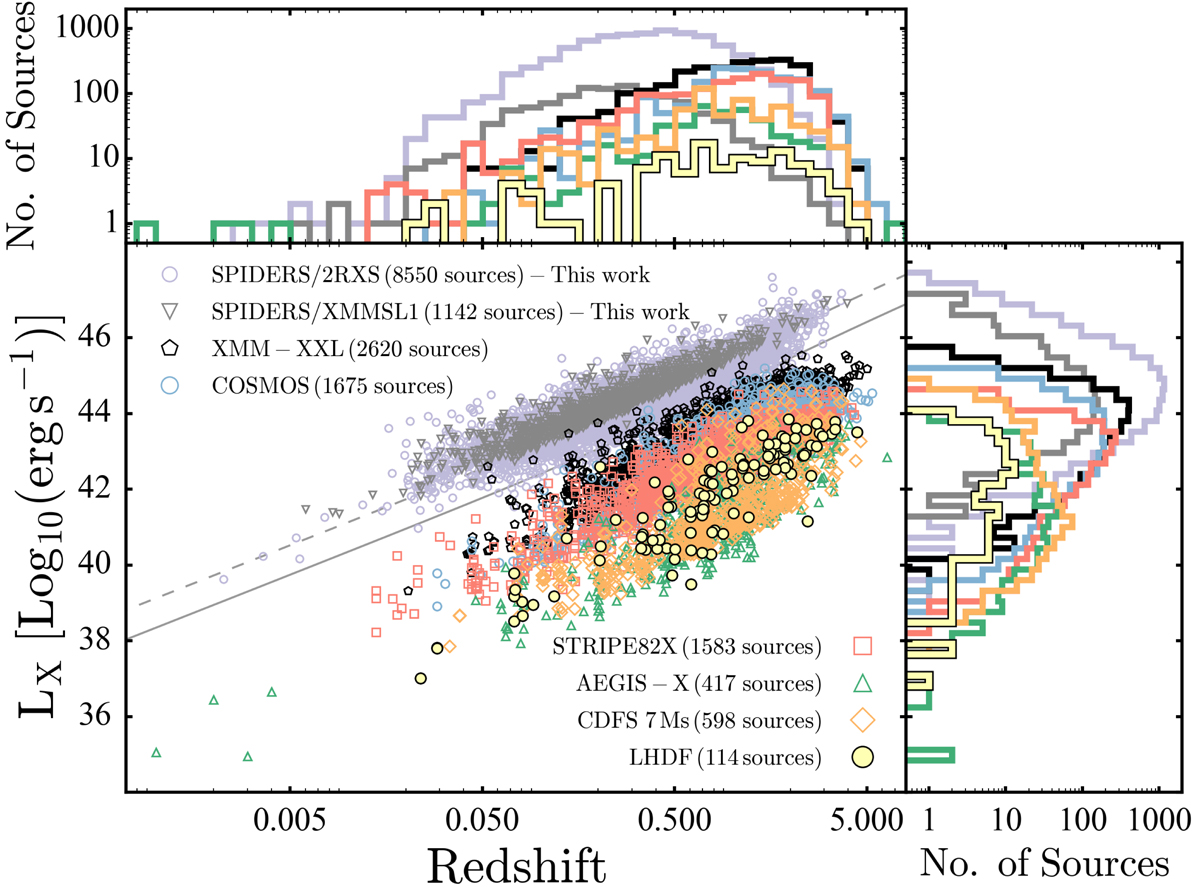Fig. 1.

Soft X-ray luminosity versus spectroscopic redshift for the samples presented in this work and the following previously published X-ray selected samples; XMM-XXL (Menzel et al. 2016; Liu et al. 2016), CDFS (Luo et al. 2017), STRIPE82X (LaMassa et al. 2016), COSMOS (Marchesi et al. 2016a,b; Civano et al. 2016), AEGIS-X (Nandra et al. 2015), and the Lockman Hole deep field (LHDF; Brunner et al. 2008; Fotopoulou et al. 2012). For each sample, the 0.5–2 keV luminosities are shown, except for the 2RXS sample, where the 0.1–2.4 keV luminosities are shown, and the XMMSL1 sample, where the 0.2–2 keV luminosities from Saxton et al. (2008) are shown. The detection limit for the 2RXS and XMMSL1 samples are shown by the solid and dashed grey lines respectively. The X-ray luminosities for the 2RXS sample are derived from the classical flux estimates described in Sect. 5, however it is noted here that some low count rate 2RXS sources do not have flux estimates. For sources that were detected in both 2RXS and XMMSL1, only the XMMSL1 luminosities are shown. Sources classified as stars have not been included in this figure.
Current usage metrics show cumulative count of Article Views (full-text article views including HTML views, PDF and ePub downloads, according to the available data) and Abstracts Views on Vision4Press platform.
Data correspond to usage on the plateform after 2015. The current usage metrics is available 48-96 hours after online publication and is updated daily on week days.
Initial download of the metrics may take a while.


